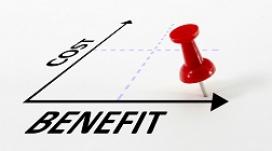Economists, FAA Ensure Accuracy of High-Profile Numbers
Significant new aviation rules must be vetted with cost-benefit analyses that show whether the cost of implementing a rule is justified by the benefits resulting from that rule.
These cost-benefit analyses receive an intense level of scrutiny from many sources: Congress, the Office of Management and Budget, the aviation industry, and the media. Often new rules have expedited timelines.
In response to a 2010 Congressional mandate regarding flight crew standards, the Federal Aviation Administration (FAA) had to engage in multiple high-profile rule-makings in rapid succession:
- Developing new rules to mitigate flight crew member fatigue
- Increasing the qualification requirements for first officers
- Improving pilot training to include more time in flight simulators and the classroom so that pilots can practice stall recognition and recovery, and other rare but potentially devastating events
A $700 Million Benefit
Faced with a high level of public scrutiny and compressed timelines, the FAA turned to Volpe’s team of economists to help assess the costs and benefits of the new pilot training rules. Changing something as fundamental as pilot training standards is an example of a high-profile rule where FAA must be confident that its cost-benefit analysis is rock solid.
The regulation covering training on stalls and other events was finalized in November 2013. The FAA estimates that from 2019 to 2028, the regulation will cost the aviation industry up to $350 million, with benefits of nearly $700 million from lives saved, planes saved, and other expenses.
Getting the Numbers Right
Volpe economists provided the skills and expertise to help develop the structure of the safety-related cost-benefit analysis. The Volpe team quickly learned the specifics of the FAA regulatory environment and stepped in as an objective partner and effectively collaborated with the FAA team.
Volpe economists also contributed to the development of the cost-benefit analysis by performing the quality control tasks. Quality control tasks are a part of any regulatory analysis, but in high-profile rules such as the pilot training rule that are subject to high levels of scrutiny, quality assurance takes on even greater importance.

“The cost-benefit model is fairly straight-forward, but sometimes errors can happen,” said Volpe economist Catherine Taylor. “It always makes sense to have a second set of eyes check the analysis. We make sure citations are provided for key elements, and we lay out the assumptions we make on the way. The ability to provide a clear and effective presentation of the analysis is a valuable skill. Presenting the evaluation clearly helps the reader understand the analysis and helps policymakers have faith in agency decisions.”
The Volpe economists also estimated the benefits of the rule. Say, hypothetically, FAA identifies four accidents in the past decade related to the issue addressed by a proposed rule and FAA safety experts estimate that the proposed rule has a 50 percent chance of preventing those four accidents. The FAA would then expect to prevent two similar accidents over the coming decade.

